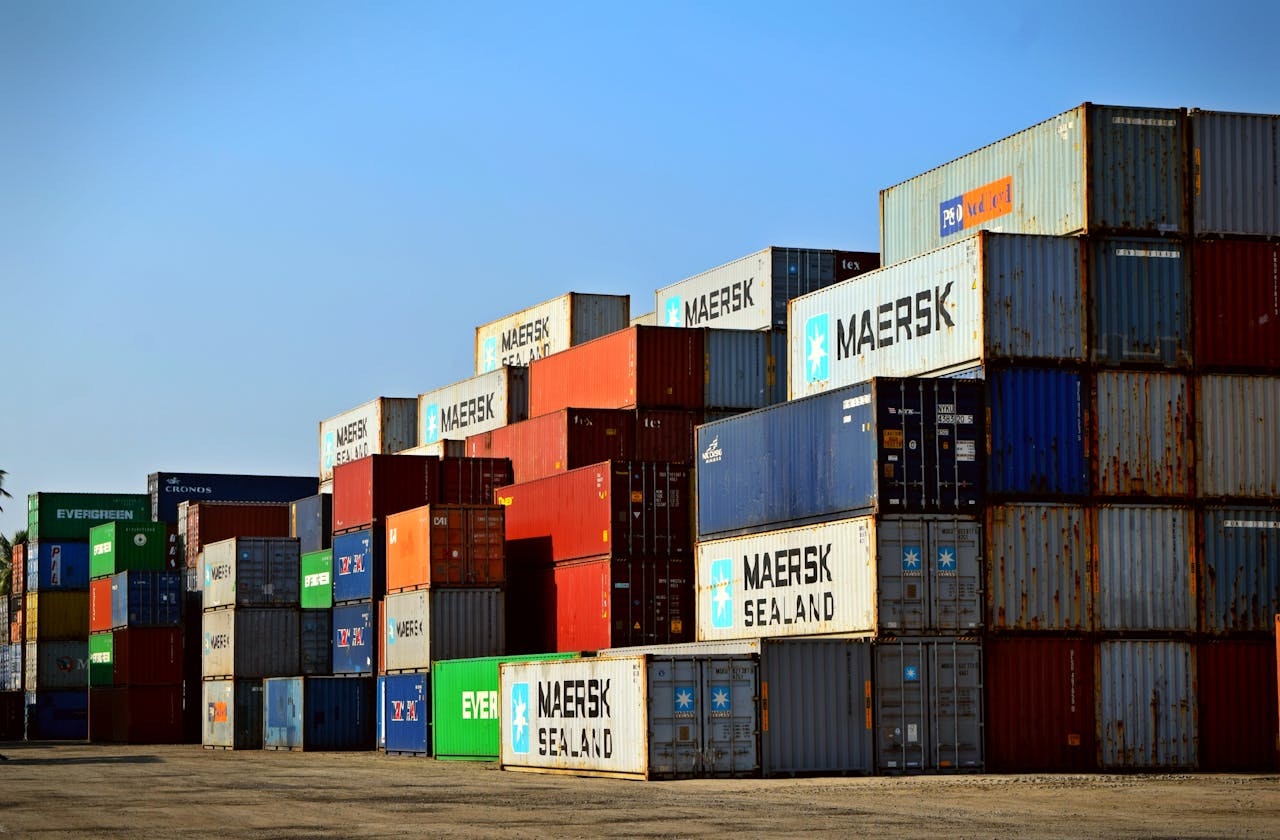The logistics and distribution industry operates in a highly dynamic environment where efficiency, speed, and cost management are crucial. Companies in this sector handle vast amounts of data, from inventory tracking and shipping schedules to delivery performance and warehouse operations. Without proper analysis, this data remains underutilised, leading to inefficiencies and missed opportunities.
This is where Microsoft Power BI can help. Power BI transforms raw logistics data into actionable insights, enabling companies to make data-driven decisions that enhance productivity, reduce costs, and improve overall supply chain management. In this whitepaper, we explore 10 key benefits of Power BI for logistics and distribution businesses.
1. Enhanced Supply Chain Visibility
Why It Matters
A lack of real-time visibility can lead to delays, stock shortages, and inefficiencies in logistics operations.
How Power BI Helps
- End-to-End Supply Chain Dashboards: Can provide a complete overview of shipments, warehouse inventory, and supplier performance.
- Real-Time Alerts: Can notify stakeholders about disruptions, delays, or bottlenecks.
- Customisable KPIs: Can track on-time deliveries, freight costs, and supplier efficiency.
Hypothetical Real-World Example
A distribution company using Power BI to monitor shipments in real time can quickly reroute delayed goods to alternative carriers, reducing delivery disruptions.
2. Optimised Route Planning and Fleet Management
Why It Matters
Efficient route planning and fleet utilisation are critical to reducing fuel costs and improving delivery times.
How Power BI Helps
- GPS & Telematics Integration: Can track vehicle movements and predict optimal routes.
- Traffic & Weather Data Analysis: Can suggest real-time re-routing to avoid delays.
- Fleet Maintenance Tracking: Can analyse vehicle wear and tear to prevent unexpected breakdowns.
Hypothetical Real-World Example
A logistics company integrating Power BI with telematics data can optimise routes dynamically, potentially reducing fuel costs by 15%.
3. Inventory Management and Demand Forecasting
Why It Matters
Poor inventory management can lead to stock shortages, overstocking, and increased holding costs.
How Power BI Helps
- Predictive Analytics: Can forecast demand trends based on historical data.
- Automated Stock Level Monitoring: Can prevent stockouts by triggering restock alerts.
- Warehouse Performance Analysis: Can identify inefficiencies in storage and retrieval processes.

Hypothetical Real-World Example
A UK-based retailer using Power BI can identify seasonal sales patterns, adjusting stock levels accordingly to prevent shortages.
4. Cost Reduction and Expense Control
Why It Matters
Without data-driven insights, logistics companies often face rising fuel, labour, and operational costs.
How Power BI Helps
- Expense Tracking Dashboards: Can monitor real-time spending across transportation, labour, and fuel.
- Supplier Cost Comparisons: Can analyse vendor costs and negotiate better contracts.
- Fraud Detection & Prevention: Can flag anomalies in financial transactions.
Hypothetical Real-World Example
A distribution company using Power BI to analyse cost breakdowns can renegotiate fuel contracts, potentially reducing operational expenses by 10%.
5. Improved Customer Service and Delivery Performance
Why It Matters
Customers expect on-time deliveries and real-time tracking of their shipments.
How Power BI Helps
- Customer Order Tracking Dashboards: Can provide visibility into estimated delivery times.
- Performance Monitoring: Can track and improve delivery success rates.
- Customer Feedback Analysis: Can identify areas of improvement based on complaints or reviews.
Hypothetical Real-World Example
A logistics provider using Power BI to analyse delivery delays can adjust workflows, improving on-time delivery rates by 20%.
6. Data-Driven Workforce Management
Why It Matters
Efficient staff scheduling and workforce productivity are crucial in logistics.
How Power BI Helps
- Shift Planning & Forecasting: Can predict workforce needs based on order volumes.
- Performance Metrics Analysis: Can identify top-performing employees and training needs.
- Labour Cost Optimisation: Can help reduce overtime expenses by balancing workloads.
Hypothetical Real-World Example
A warehouse using Power BI to manage shift patterns can reduce employee overtime costs while maintaining productivity.

7. Risk Management and Compliance Monitoring
Why It Matters
Logistics companies must comply with regulations on safety, emissions, and customs clearance.
How Power BI Helps
- Compliance Dashboards: Can track regulatory adherence in real-time.
- Incident Reporting & Analysis: Can identify high-risk areas in operations.
- Automated Audit Preparation: Can generate compliance reports to meet industry standards.
Hypothetical Real-World Example
A logistics firm using Power BI to track carbon emissions can ensure compliance with sustainability regulations.
8. Supplier and Vendor Performance Analysis
Why It Matters
Unreliable suppliers can cause delays and increased costs.
How Power BI Helps
- Supplier Scorecards: Can measure on-time deliveries and contract compliance.
- Vendor Cost-Benefit Analysis: Can compare different suppliers for cost-effectiveness.
- Disruption Risk Alerts: Can highlight potential risks in the supply chain.
Hypothetical Real-World Example
A logistics company using Power BI to monitor vendor performance can identify underperforming suppliers and switch to more reliable ones.
9. AI-Driven Predictive Maintenance
Why It Matters
Vehicle and equipment failures lead to downtime and increased repair costs.
How Power BI Helps
- IoT Sensor Integration: Can predict vehicle breakdowns before they happen.
- Historical Maintenance Data Analysis: Can recommend preventive servicing schedules.
- Automated Repair Cost Tracking: Can optimise maintenance budgets.
Hypothetical Real-World Example
A transportation company using Power BI for predictive fleet maintenance can reduce unplanned vehicle downtime by 25%.
10. Competitive Advantage and Strategic Decision-Making
Why It Matters
In a competitive industry, leveraging data for strategic planning is essential.
How Power BI Helps
- Market Trends Analysis: Can identify emerging opportunities and threats.
- Benchmarking Against Competitors: Can compare operational performance with industry leaders.
- Scenario Modelling for Business Expansion: Can simulate financial impacts of new distribution hubs.
Hypothetical Real-World Example
A logistics provider using Power BI to analyse competitor pricing trends can adjust its rates to stay competitive without sacrificing margins.
Conclusion
Power BI enables logistics and distribution companies to unlock powerful insights, optimise operations, and improve profitability through real-time data analytics and AI-driven insights. By leveraging these capabilities, businesses can make informed decisions that drive efficiency and competitiveness.
Ready to implement Power BI for your logistics operations?
Contact NetMonkeys today to explore how we can tailor Power BI solutions for your business.
Related posts
Visit blog
Think Like a Hacker: Why Most Cyberattacks Start with Human Error, Not Brute Force
Discover why most cyberattacks begin with overlooked vulnerabilities, such as missed updates, reused passwords, and phishing, rather than brute force

Business Email Compromise: Identifying and Preventing Attacks
Discover how to identify and prevent Business Email Compromise (BEC) attacks. Learn key red flags, common scams, and security best practices to protect your business from cyber fraud. 4o

10 Key Benefits of Power BI for Manufacturers
Discover how Power BI helps manufacturers optimise production, reduce costs, enhance quality control, and drive data-driven decision-making for business success.
